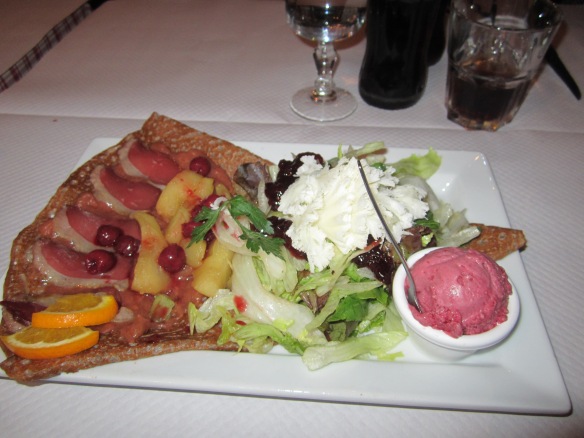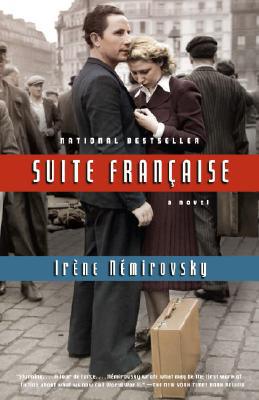
Edith Wharton, 1905
Edith Wharton might have looked like one of the Gilded Age society matrons straight out of the pages of her novels like The Age of Innocence or The House of Mirth, but it turns out she could really roll up her sleeves when the situation demanded. Now, on the 100th anniversary of World War I, it is time we give Wharton full credit for her service as an American war correspondent and refugee aid worker.
Wharton recorded her observations about World War I in a series of articles for Scribner’s Magazine. Since then, these articles have been published together in a book called Fighting France: From Dunkerque to Belfort. Her war work, which included charitable efforts on behalf of Belgian refugees and international advocacy against American neutrality, earned her a French Legion of Honor medal in 1916.

A postcard sent by Edith Wharton to her housekeeper Anna Bauman picturing the town of Heiltz-le Maurupt after the First Battle of the Marne in September, 1914.
This blog will follow in her footsteps from the outbreak of World War I in July, 1914 through her travels through the battlefields of the Champagne-Ardennes region in early 1915, and her visit to the Lorraine and Vosges regions in May of 1915. In addition to her travels to the German front, Wharton worked tirelessly to organize workshops for unemployed Parisian women and shelters for Belgian refugees.
July 30, 1914: Wharton Returns to Paris, Stops at Chartres Cathedral on the Eve of World War I
It was the last days of July, 1914. Edith Wharton and her “unromantically companionable” travel partner Walter Berry were hurrying back to Paris from a three week trip to Spain. Events in Europe were quickly escalating after the assassination of Archduke Franz Ferdinand. As Wharton herself put it: “the international news [was] looking fairly black.” Just a few days earlier, on July 28, 1914, Austria had declared war on Serbia. Wharton and Berry spent the night in Poitiers, where the atmosphere was “strange, ominous and unreal, like the yellow glare that precedes a storm. There were moments when I felt as if I had died, and waked up in an unknown world.” (A Backward Glance, 1934).
Nevertheless, as Wharton and Berry drove from Poitiers to Paris, they stopped for a picnic lunch underneath some apple trees and she found it hard to think about the reality of war: “the serenity of the scene smiled away the war rumours which had hung on us since morning.” (Fighting France From Dunkerque to Belfort, The Look of Paris, Scribner’s, 1915).
The traveling companions made it to Chartres by four o’clock that afternoon, just as the sun was bursting out from behind banks of thunderclouds. They entered the Chartres Cathedral, stood before the magnificent stained glass windows, and sought solace from the beauty and power of the sight before them. Wharton later recalled the scene like this:
[S]teeped in a blaze of mid-summer sun, the familiar windows seemed singularly remote yet overwhelmingly vivid. Now they widened into dark-shored pools splashed with sunset, now glittered and menaced like the shields of fighting angels. . . . When one dropped one’s eyes from these ethereal harmonies, the dark masses of masonry below them, all veiled and muffled in a mist pricked by a few altar lights, seemed to symbolize the life on earth, with its shadows, its heavy distances and its little islands of illusion. All that a great cathedral can be, all the meanings it can express, all the tranquilizing power it can breathe upon the soul, all the richness of detail it can fuse into a large utterance of strength and beauty, the Cathedral of Chartres gave us in that perfect hour (Fighting France, The Look of Paris).
A Visit to Chartres in Wharton’s Footsteps
You too can feel the same tranquilizing power of the stained glass windows of Chartres. The train ride from Paris to Chartres is as short as one hour, and the Cathedral is an easy five minute walk from the Chartres train station. If you’re lucky, the sun will pop out for you just like it did for Wharton and Berry in 1914. Unfortunately, the day of my visit it was wet and rainy, and only the dimmest of light poured through the windows.
If you’re looking for a good spot for lunch on a day trip to Chartres, the town is absolutely full of them. But for an unbelievably memorable crêpe, you’ve got to stop in at Creperie la Picoterie at 36 rue des Changes, Chartres.

Creperie la Picoterie’s buckwheat crepe with smoked duck, apples, cherries, goat cheese, lettuce, black olives and rhubarb compote. As good as it looks!

One of my traveling pals got the Pain de Poilane sandwich with sun-dried tomatoes and it was incredible too.
Next Up in Wharton’s Footsteps: Paris on the Eve of War, August 1914
Recommended Reading:

Fighting France: From Dunkerque to Belfort by Edith Wharton is available as a free ebook at archive.org.























You must be logged in to post a comment.